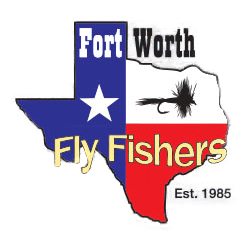Accuracy Made Easy!
In previous articles we have talked about loops, false casting and distance but have not mentioned an important aspect of our casting. As in almost all sports there is one thing that we strive for and it can determine success or failure. It doesn’t matter whether we are shooting a three pointer from downtown in basketball or picking a single out of a flushing covey of quail or trying to make that twenty foot putt. Our success or failure is determined by how accurately we perform our given sport. In fly fishing, your first cast often is the one a fish will take, with each successive cast the chances of a fish taking the fly go down.
It is best to practice your casting when you are not fishing. Your, at least mine, concentration on casting goes out the window or downstream when you see that big head come out of water to gulp down a drifting caddis or mayfly. Your pulse and breathing quickens and you can think only of getting your fly in the water. See what I mean? So practice when you are free of “distractions” and let your practice “take over” when you are fishing.
In fly fishing or casting we need to always cast to a target. It doesn’t matter if we are blind casting when we do not see a fish to cast to. It is better to pick a target even if it is only a rock in the stream or a tuft of grass near an undercut bank. It is also more efficient to make an accurate cast first rather than making several attempts.
So how do we make an accurate cast or improve our accuracy? There are several things to consider in making accurate casts. I have found that, in my case, a more vertical casting plane is the most accurate for short to medium distances or any distance up to around fifty feet. This is because when the loop, rod, forearm and upper arm and target are in the vertical plane, the loop will unroll inline with the target with little horizontal deviation even if the fly kicks over. While an off vertical casting plane at times will result in the fly hooking to the left or right. In a vertical casting plane with all our casting “parts” inline with our target we will need to consider distance and how to judge that distance. We can judge distance by hovering the fly at the end of the cast. At the end of the cast there is a split second where the fly seems to stop in mid-air. This is when you can judge your distance. This can be done casting in a vertical or off vertical rod plane. In an off vertical rod plane you have the benefit of triangulating your sight line and line path and is useful when casting longer distances. Just be sure to bring your rod back to a more vertical position when you have the desired distance in order to maintain your horizontal accuracy.
One more item to consider in accuracy is loop or line trajectory. To have the most accurate cast, a loop that unrolls and straightens a foot or two above the water is necessary. This keeps the wind, from any direction, from blowing your fly off target too far. Imagine what would happen to your accuracy with a loop straightening six, seven or eight feet above the water in a breeze or stiff wind. Your fly would likely land in an unintended location.
Lastly I am reminded of hint or suggestion that I have heard often in shooting and it applies to casting as well. That hint is to “Aim small. Miss small”. Always have a small target to cast to and that target is not the entire river.
Bob


